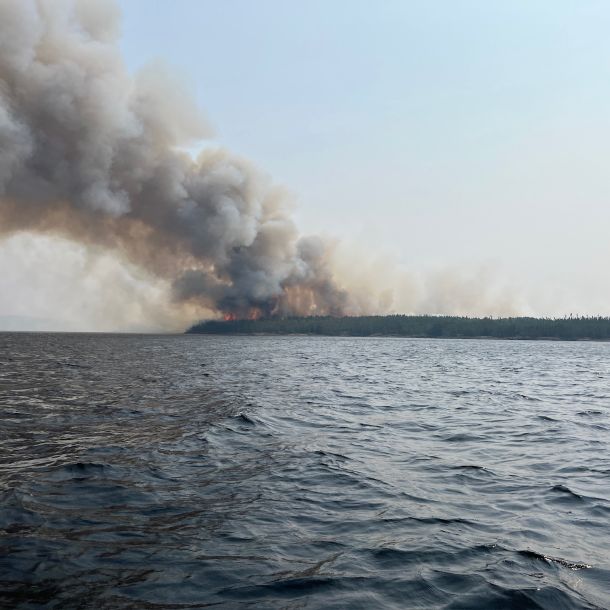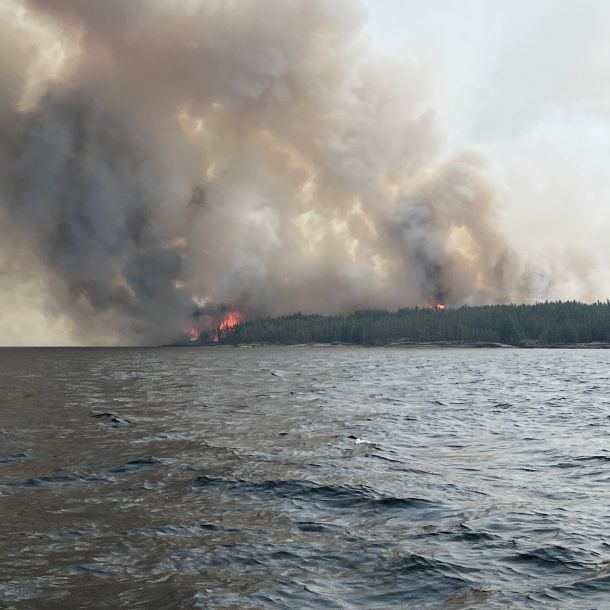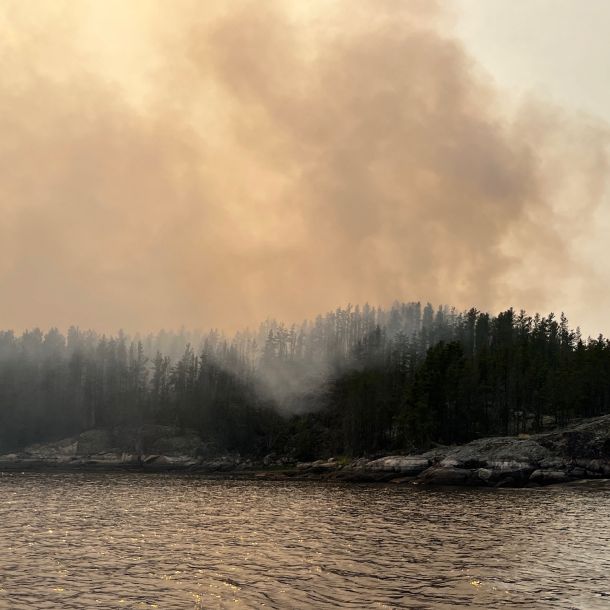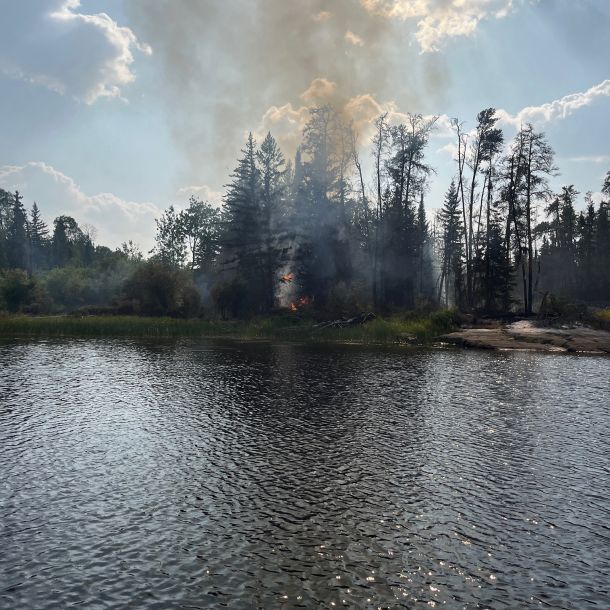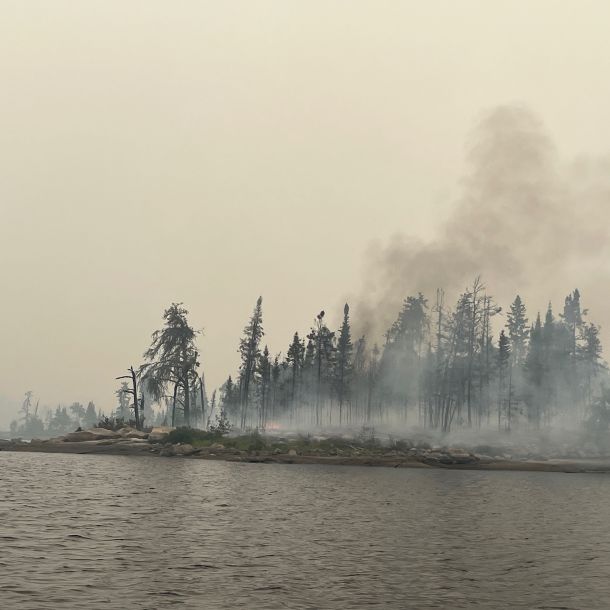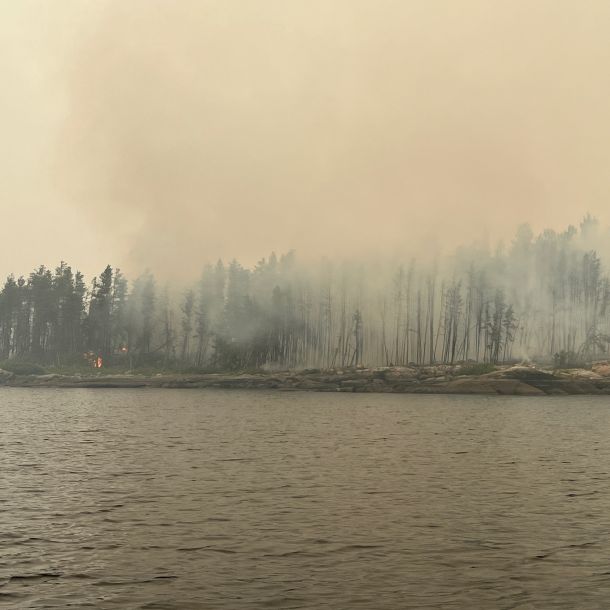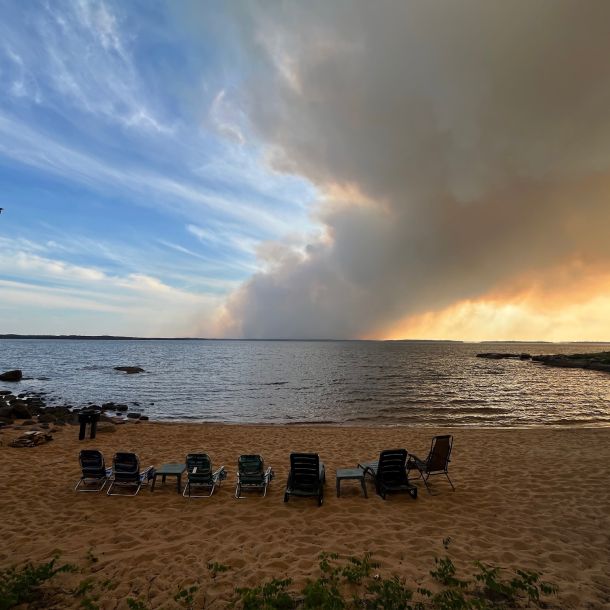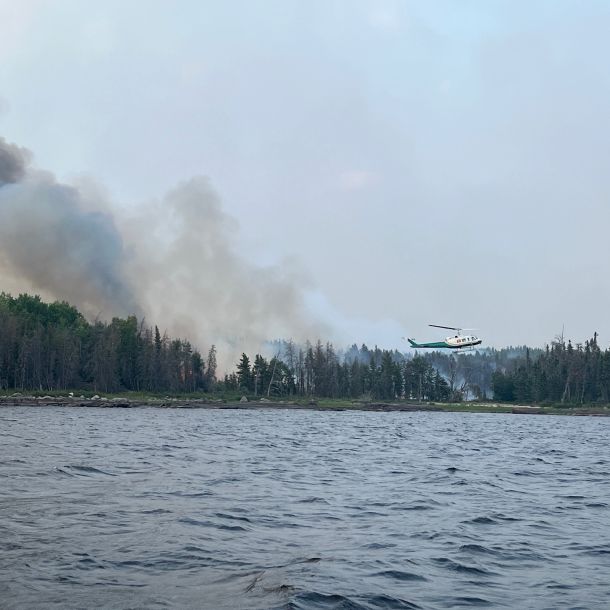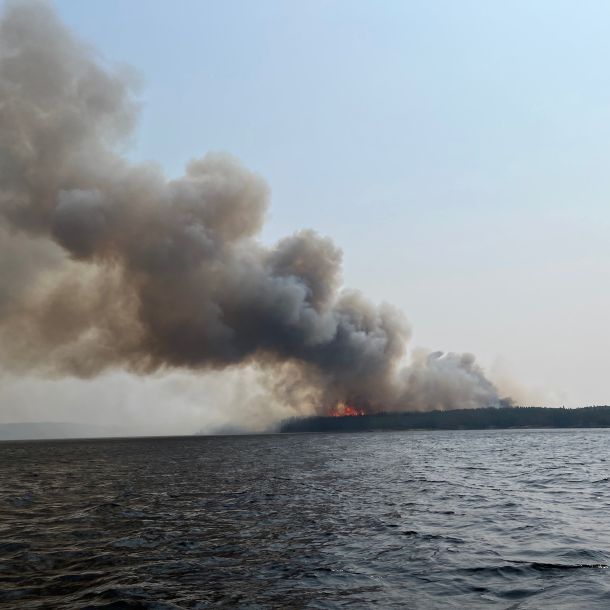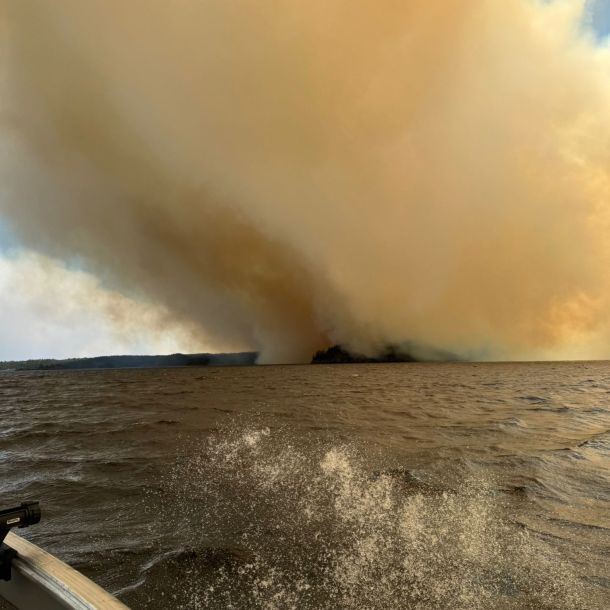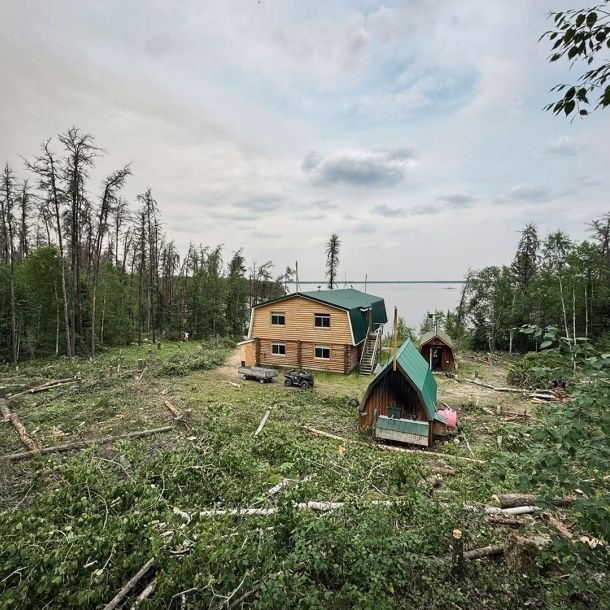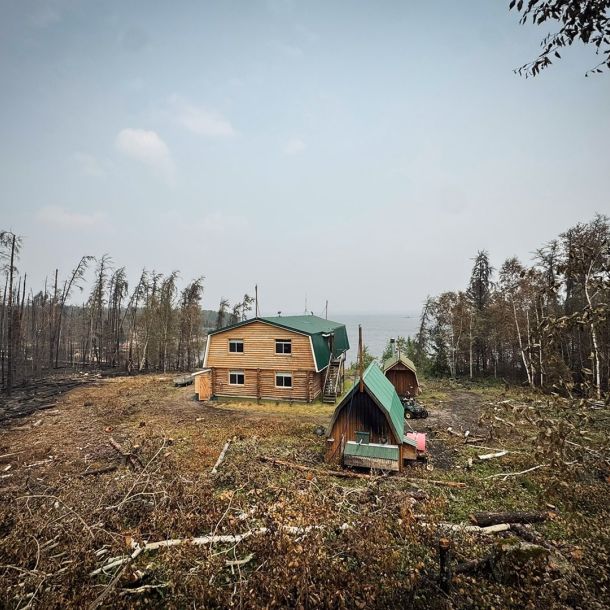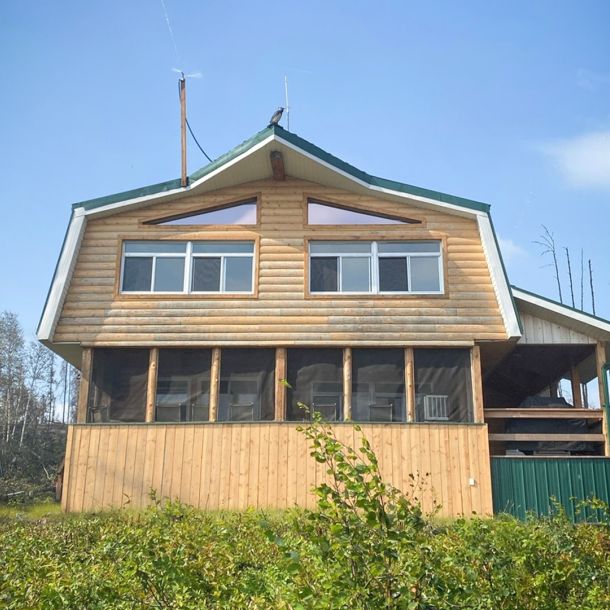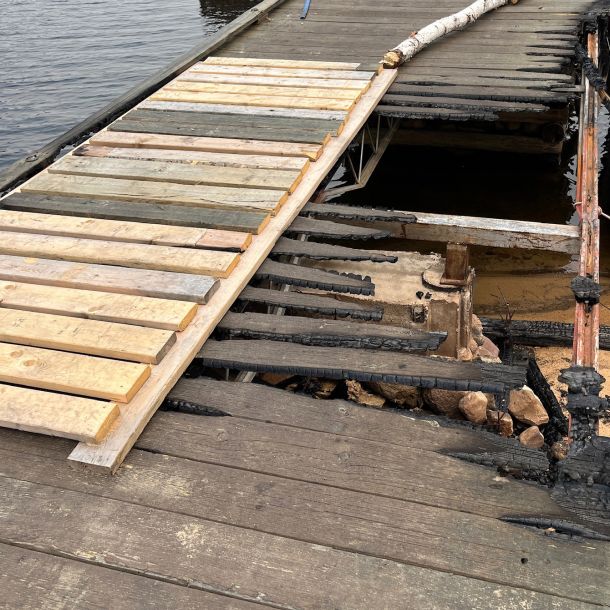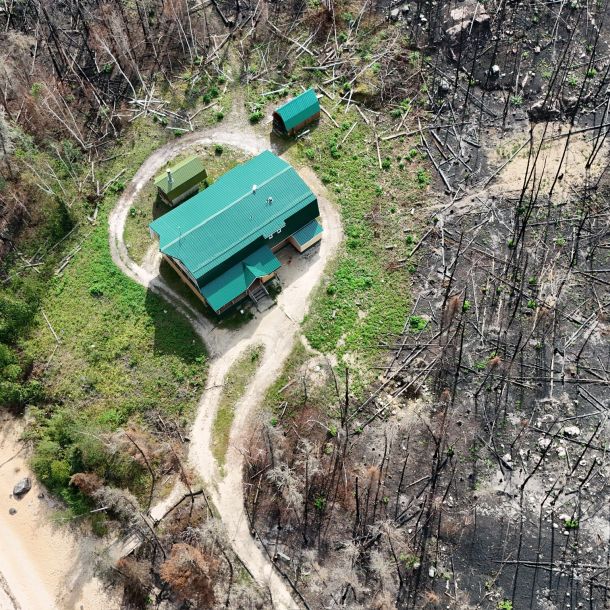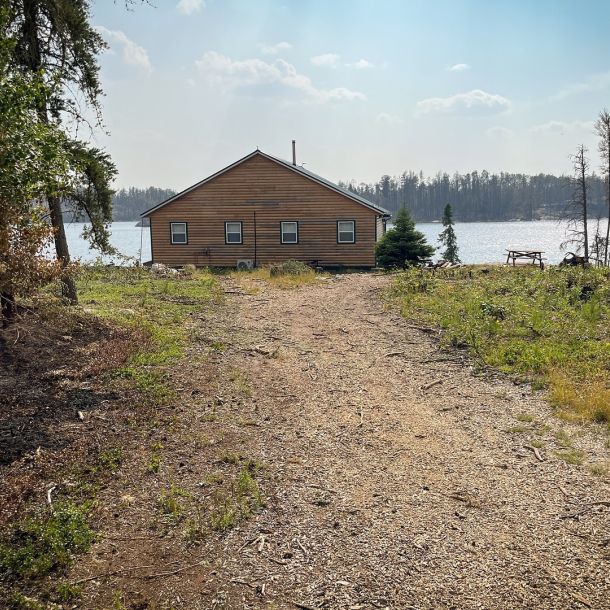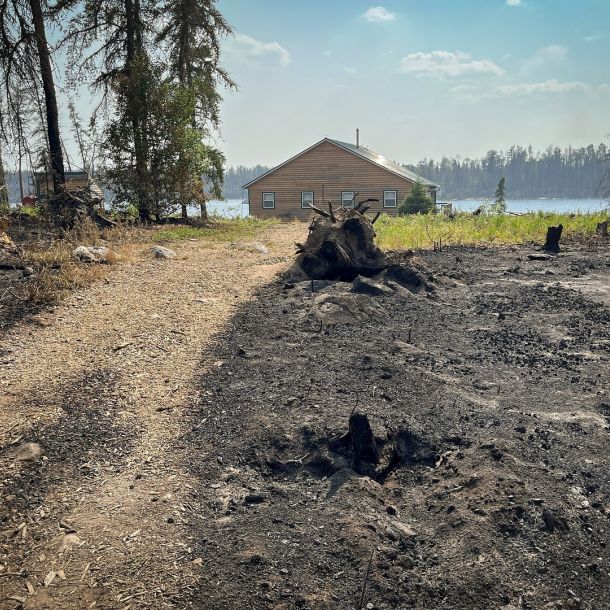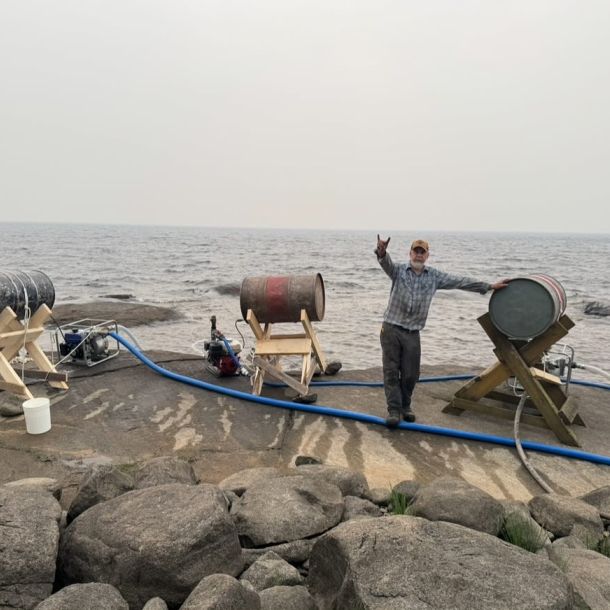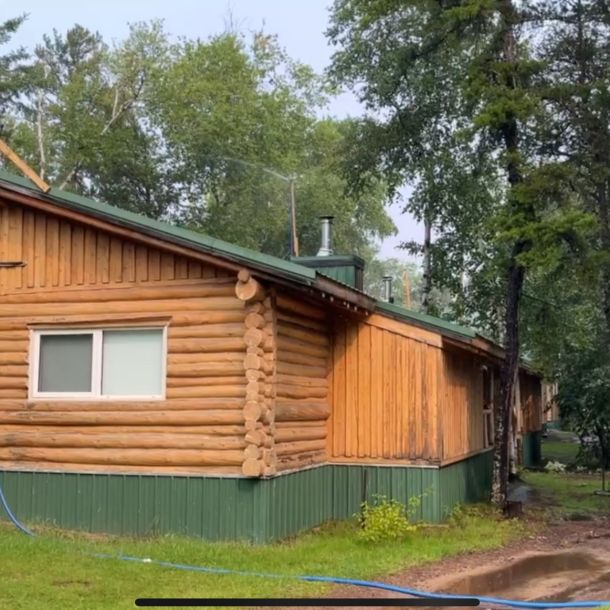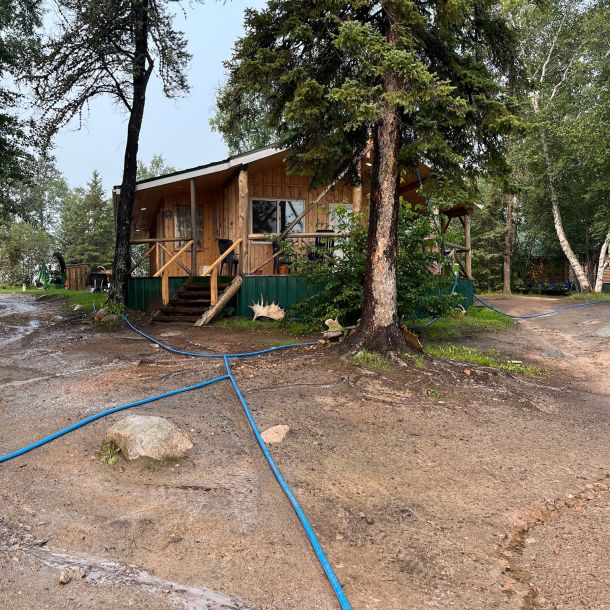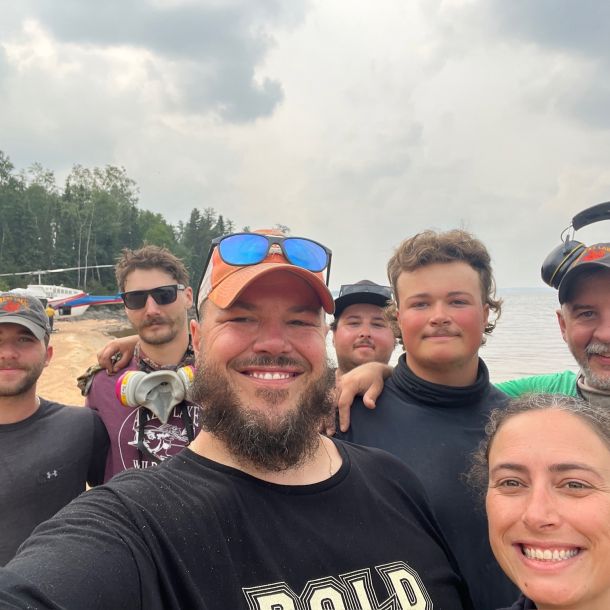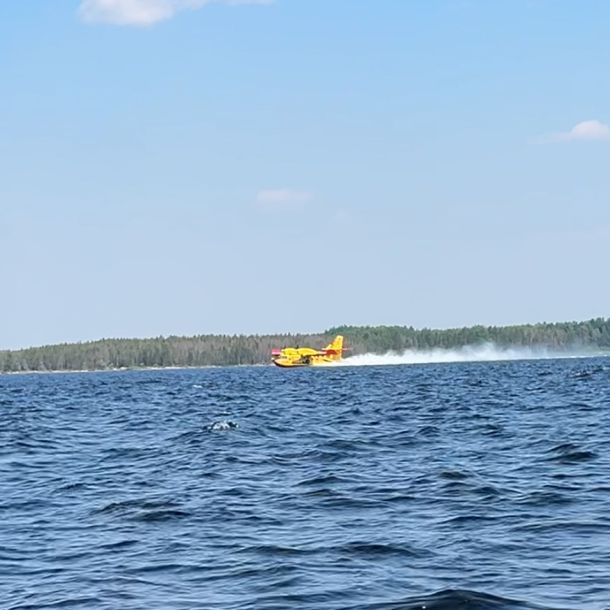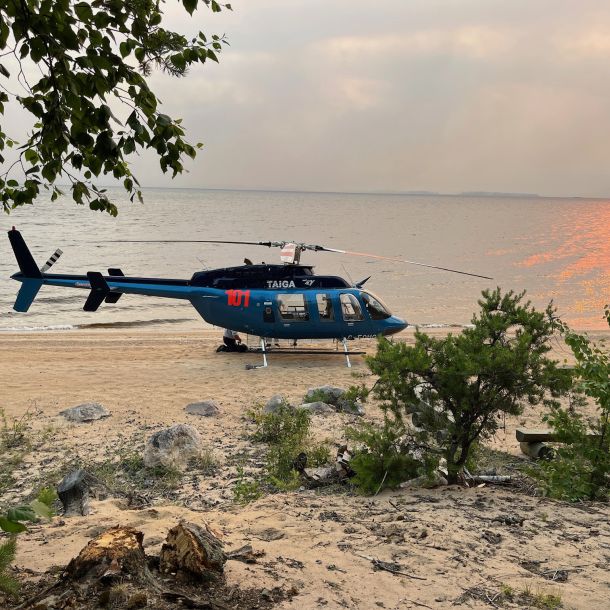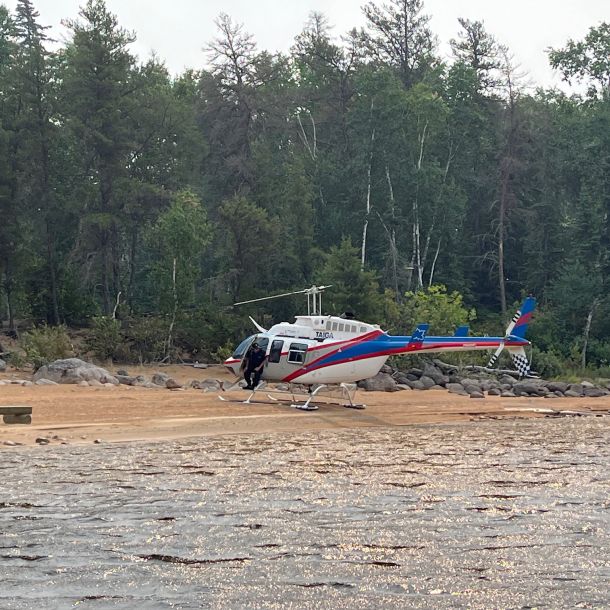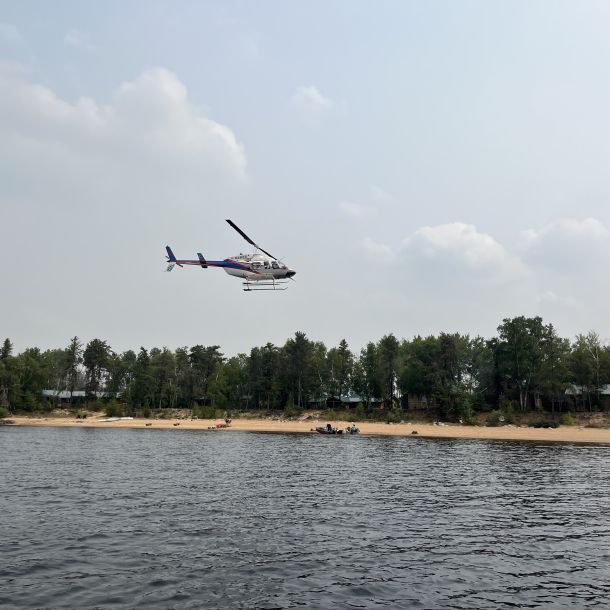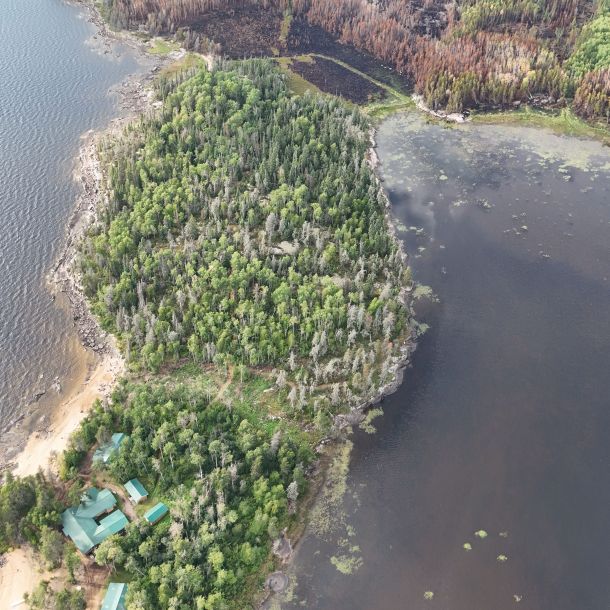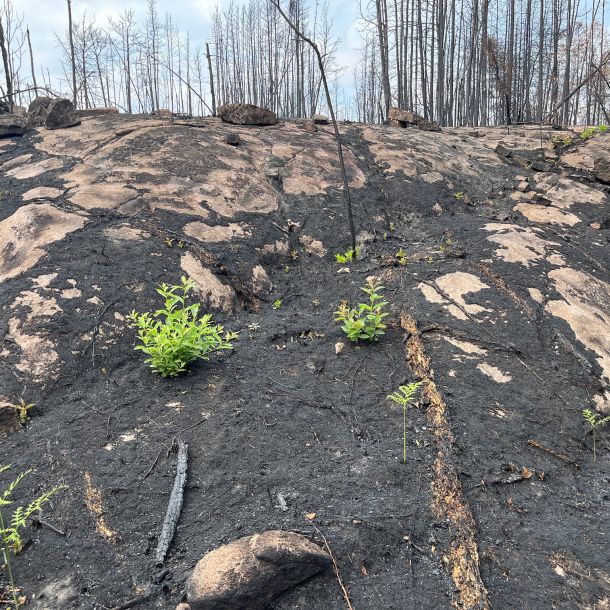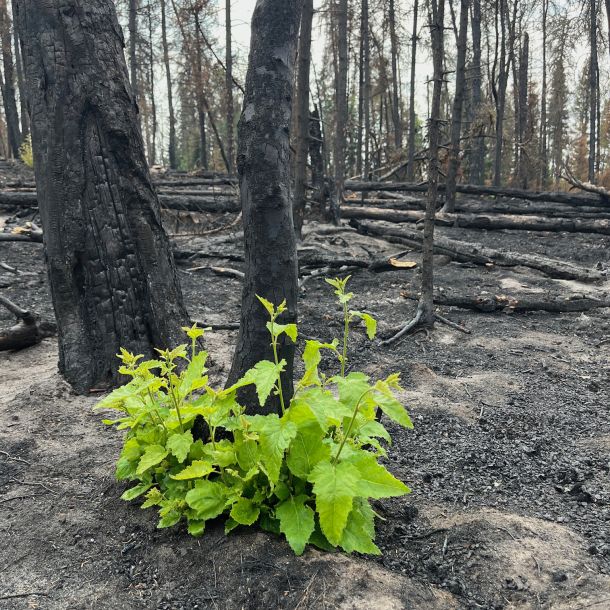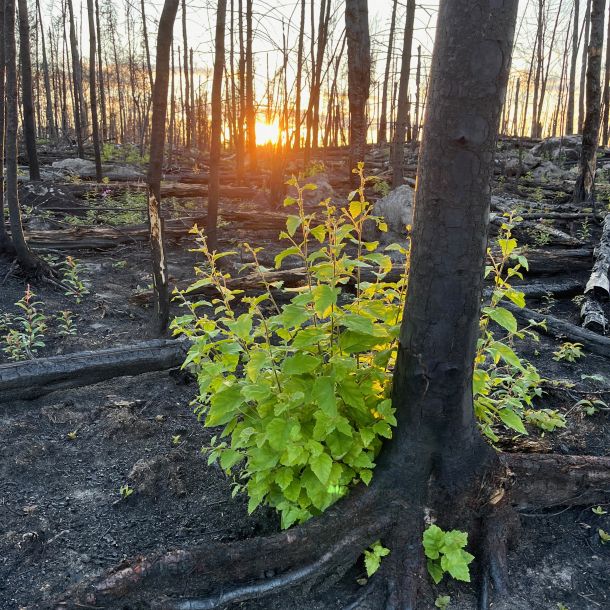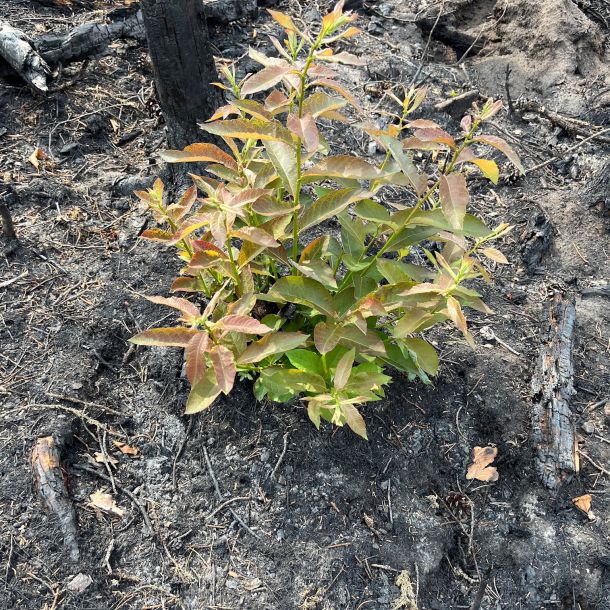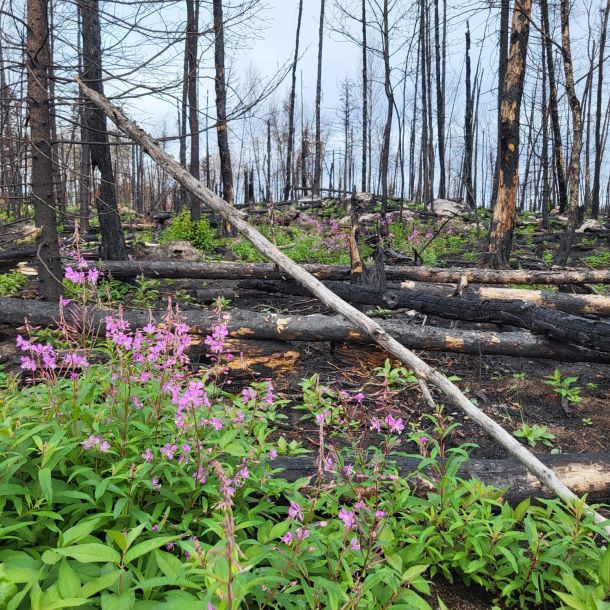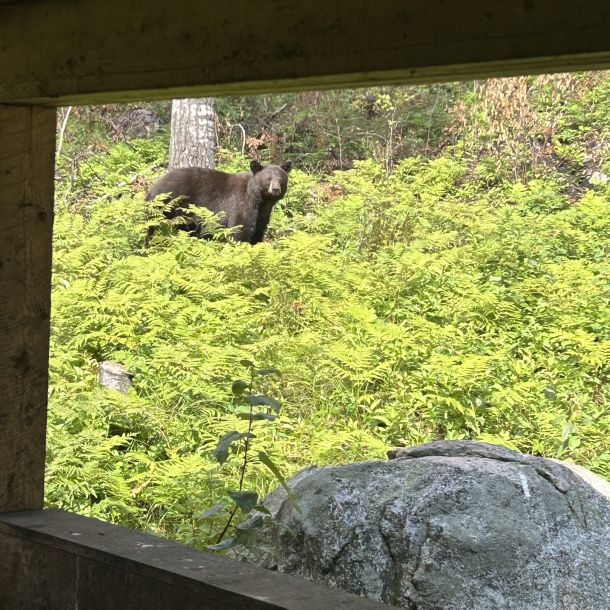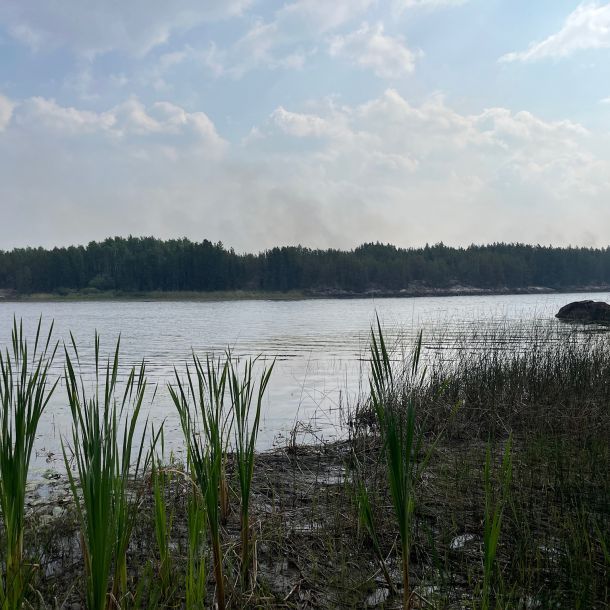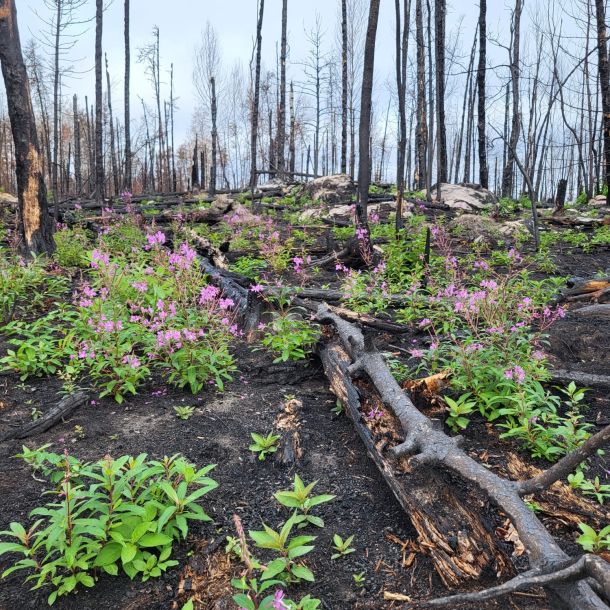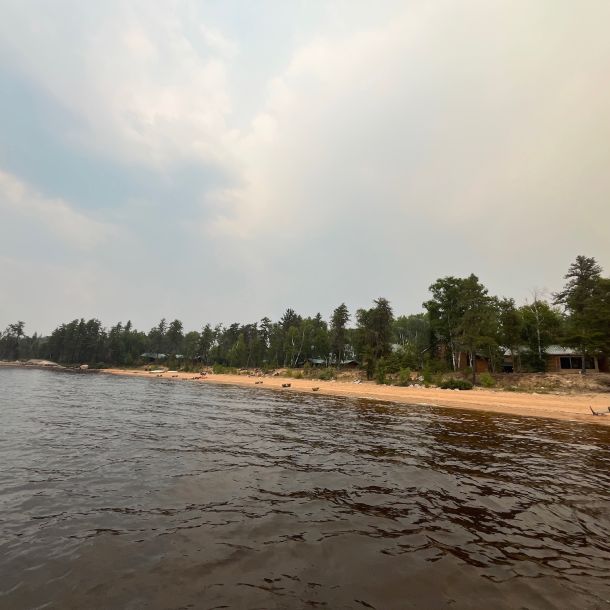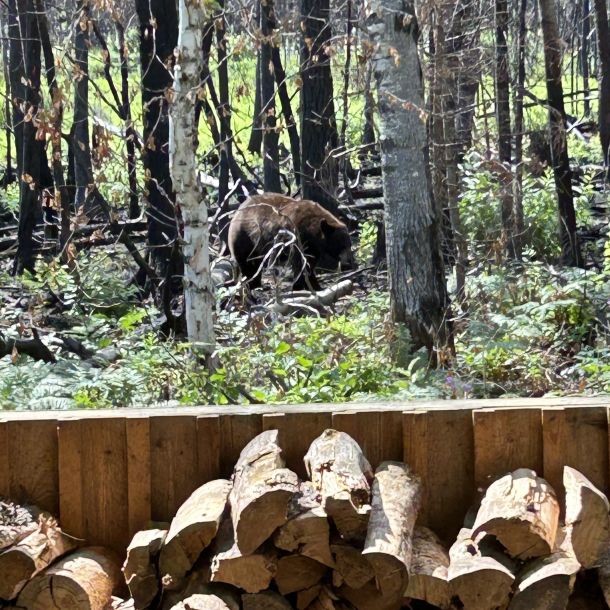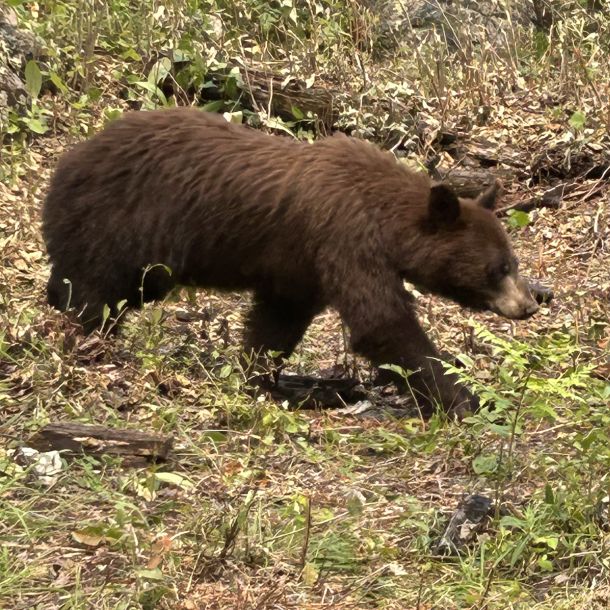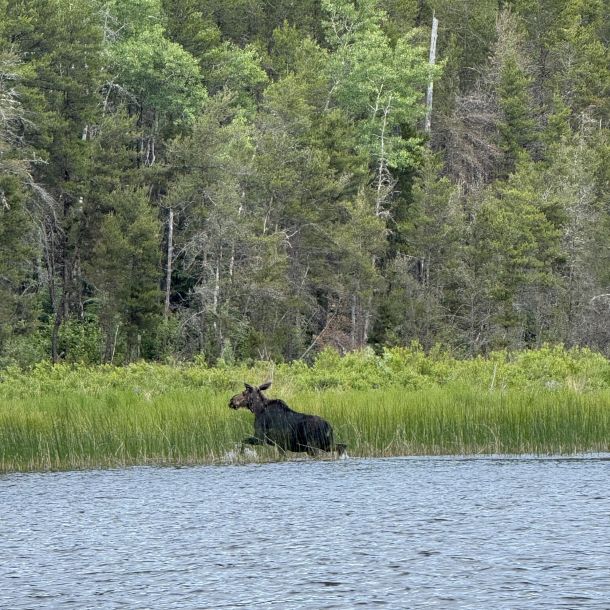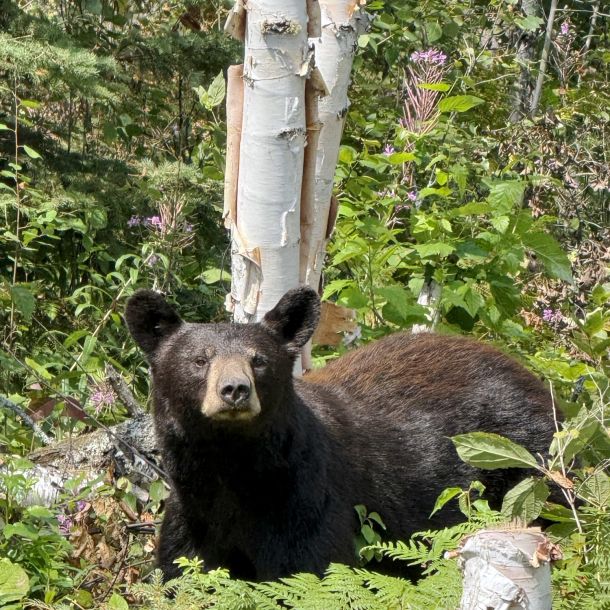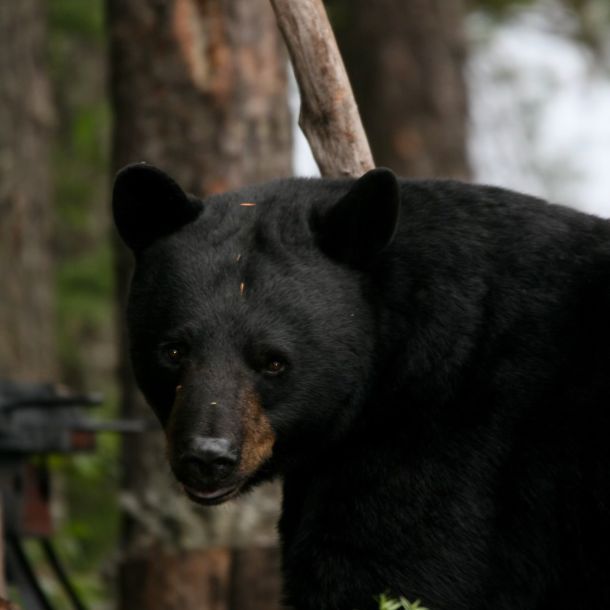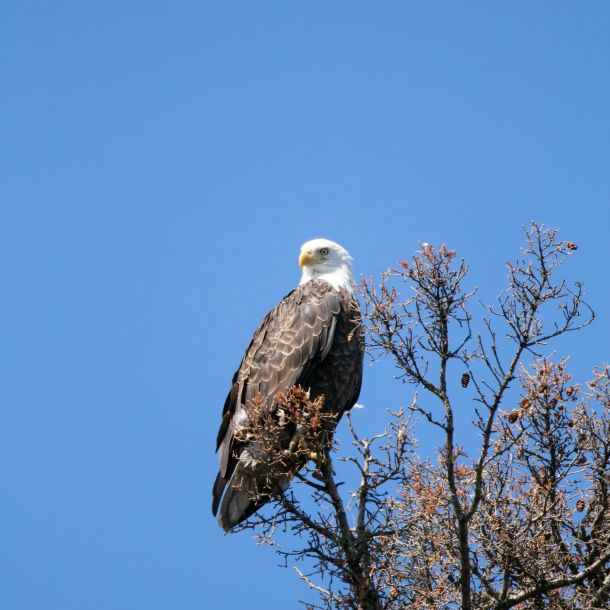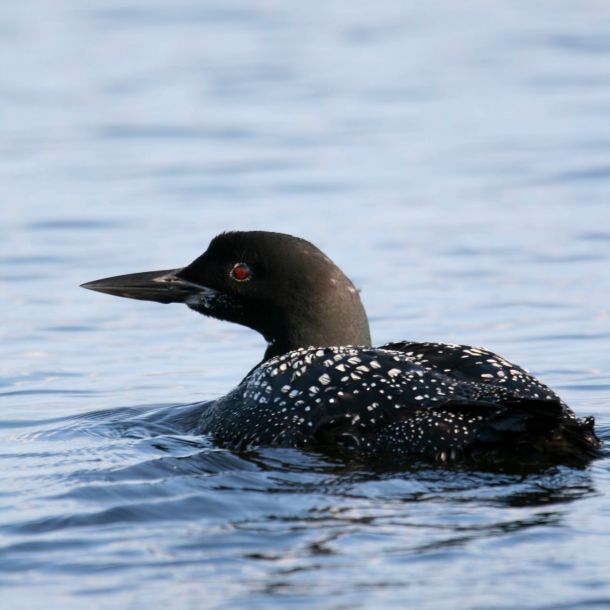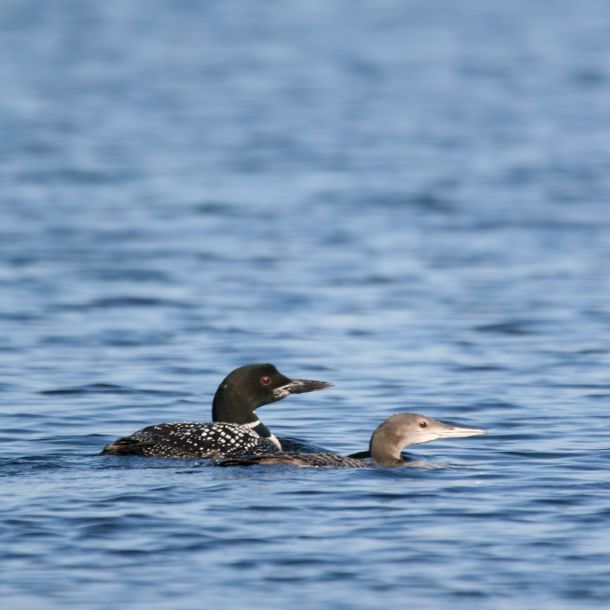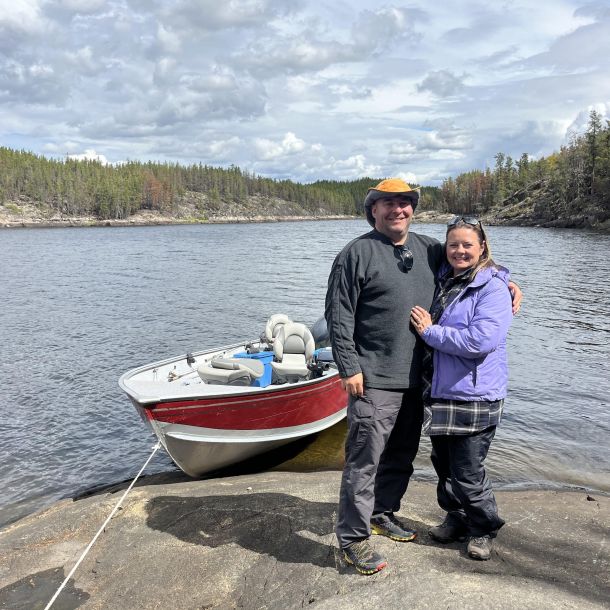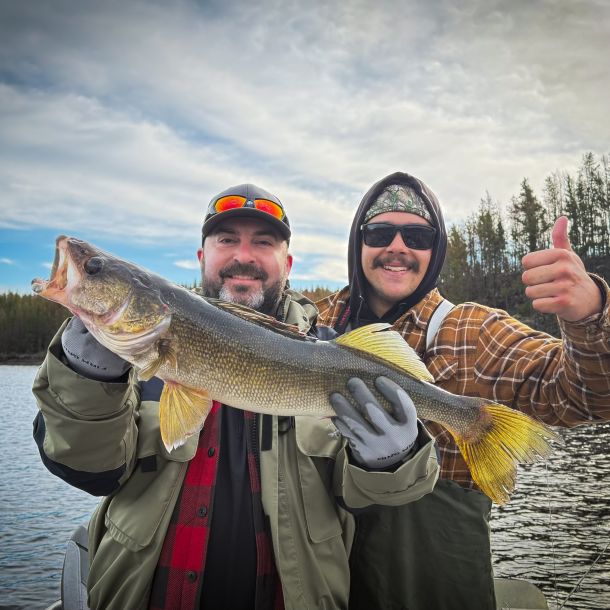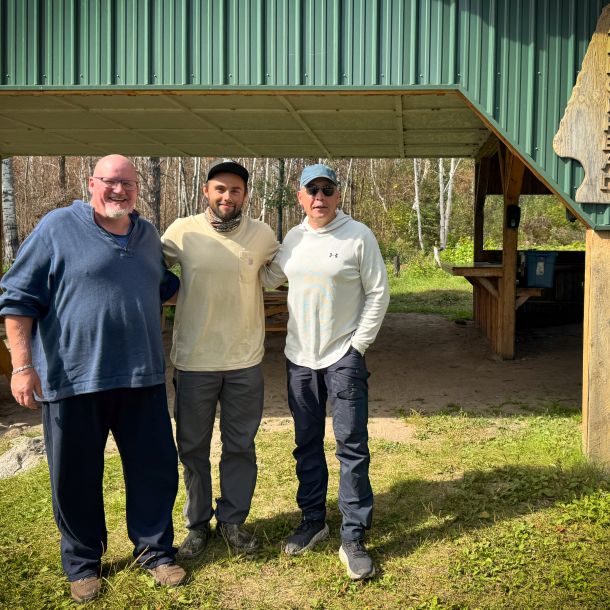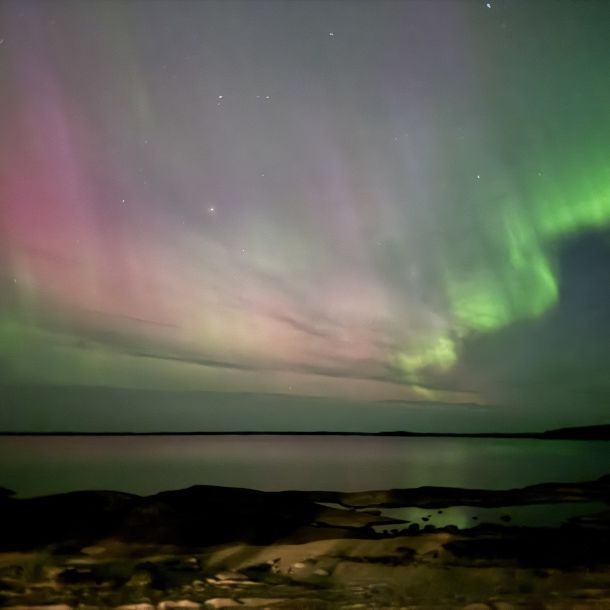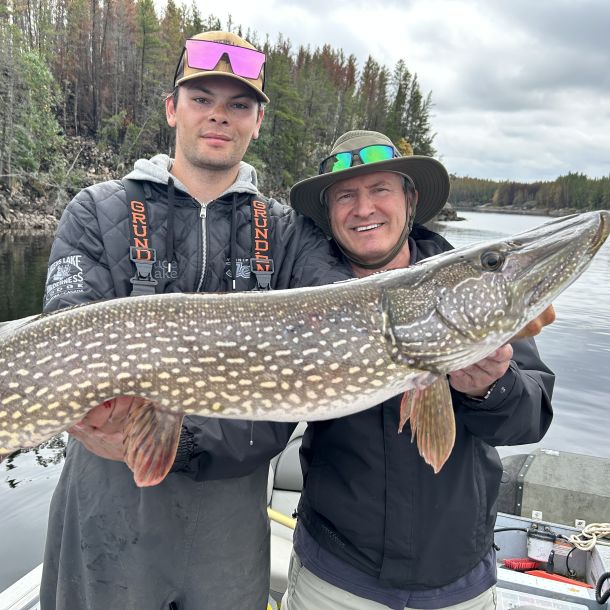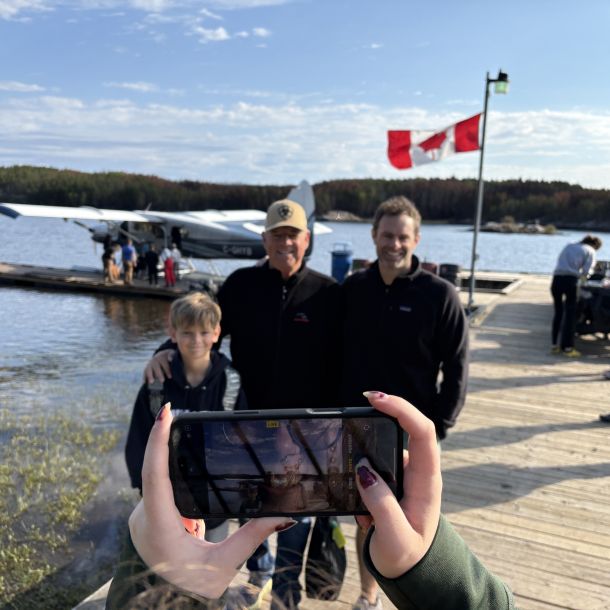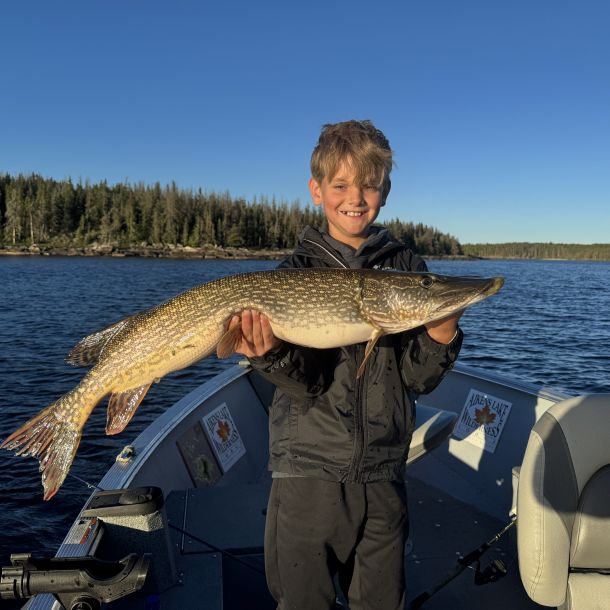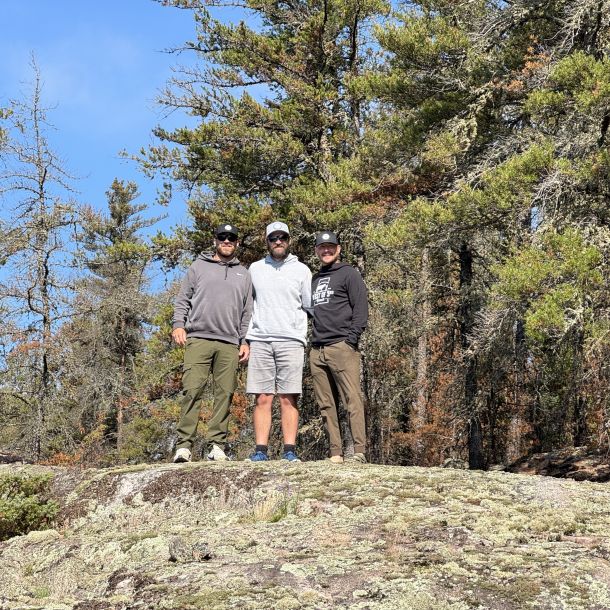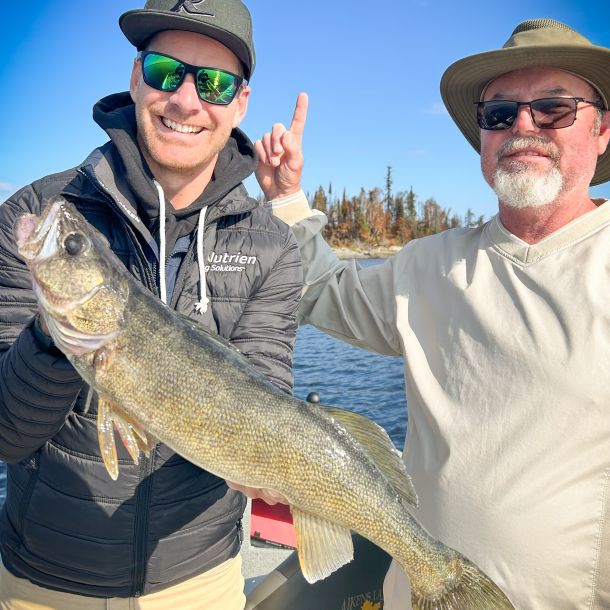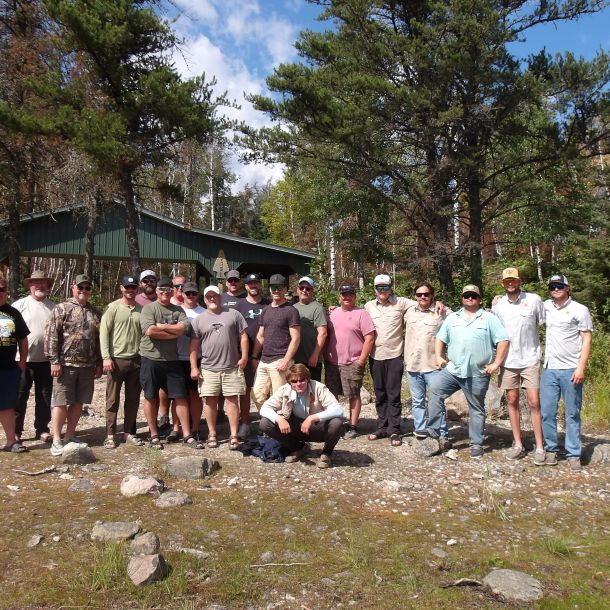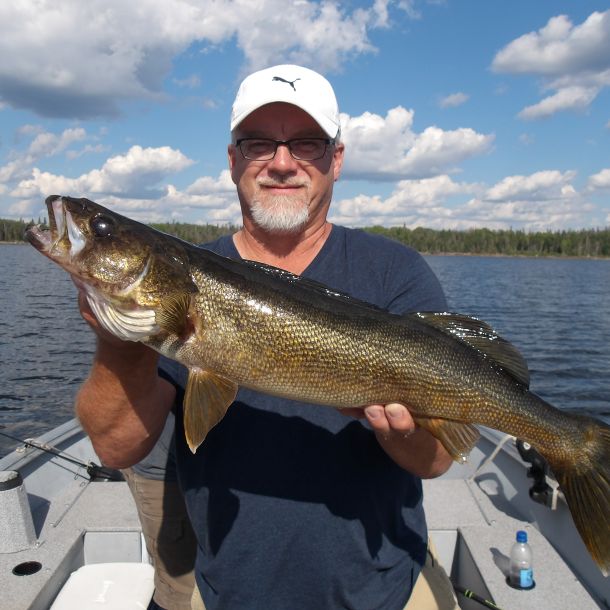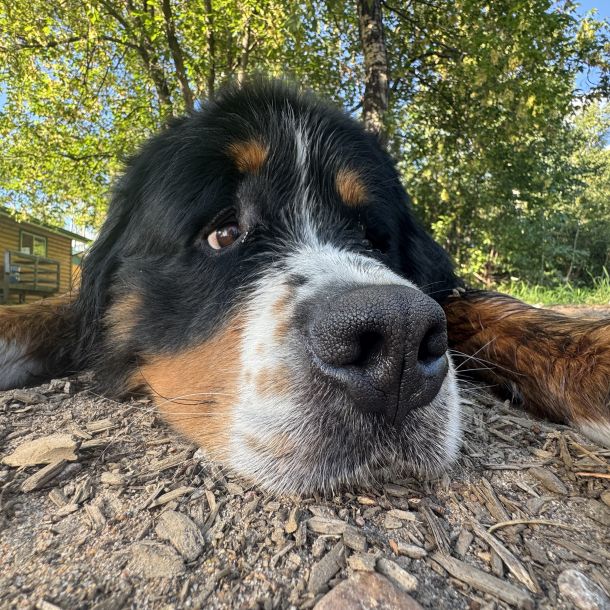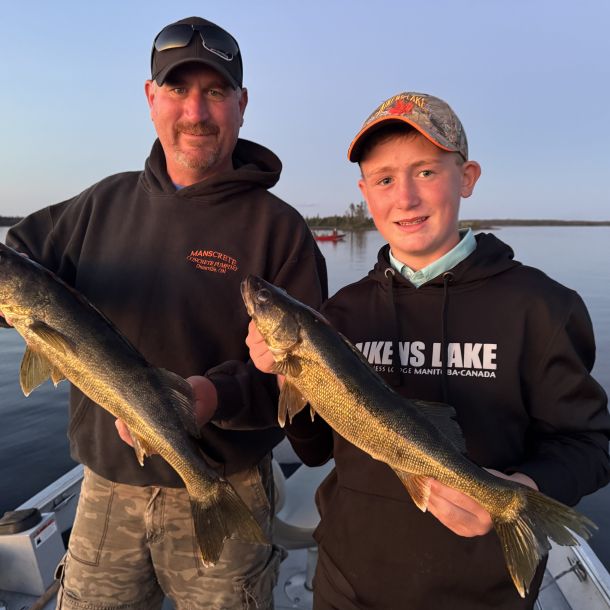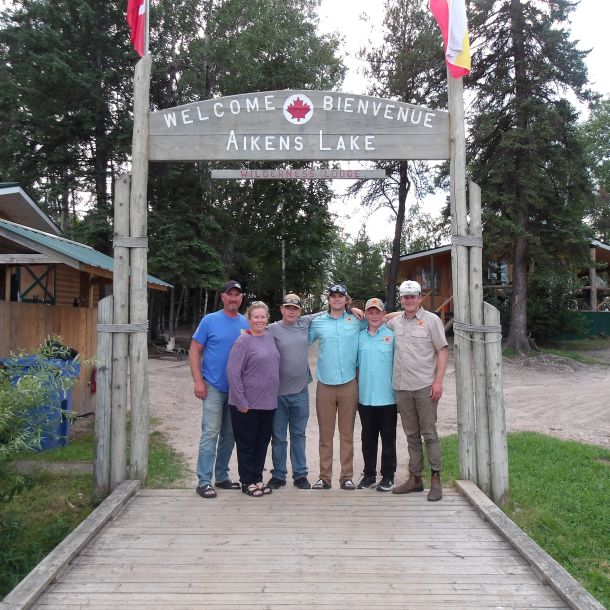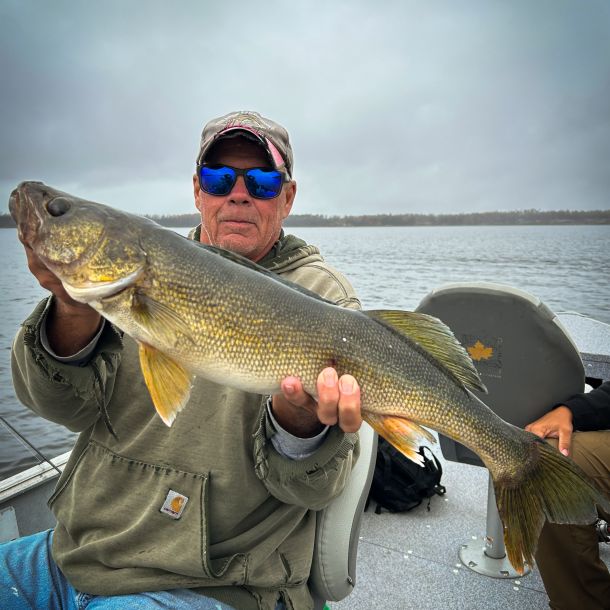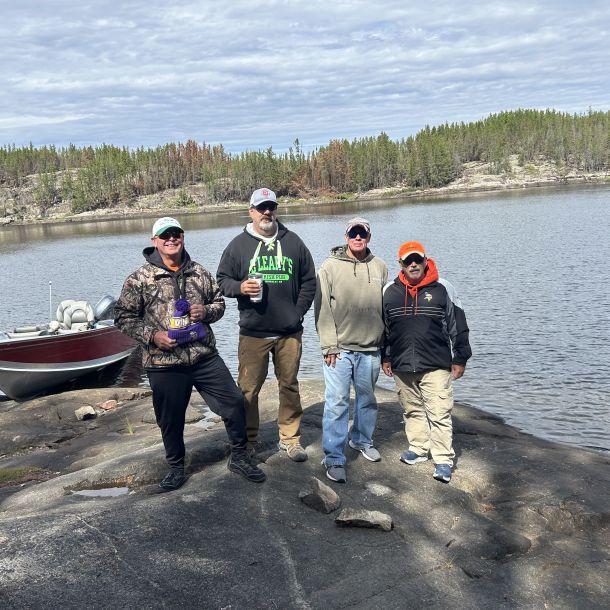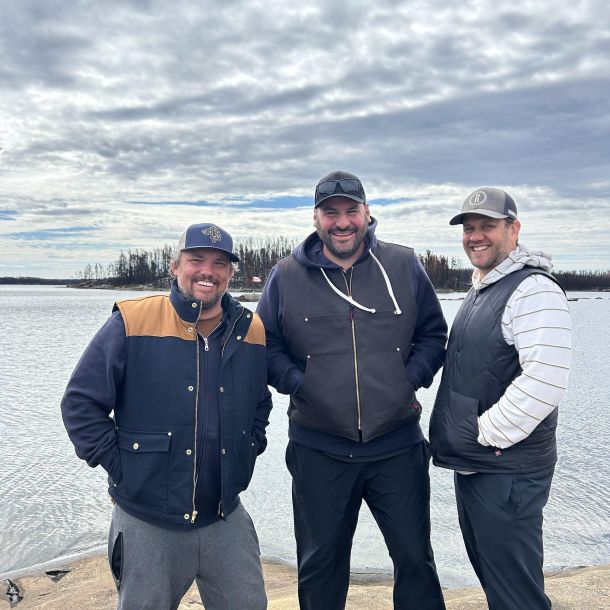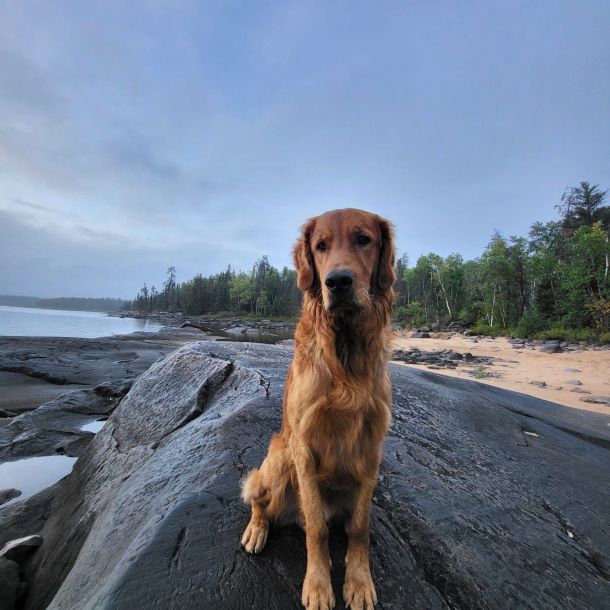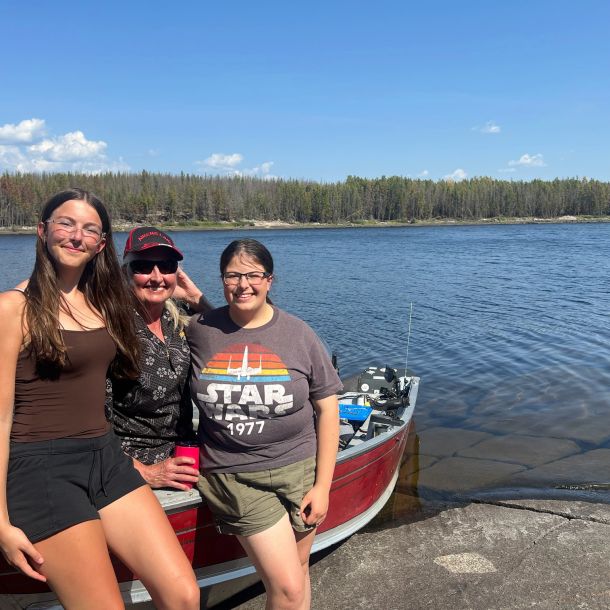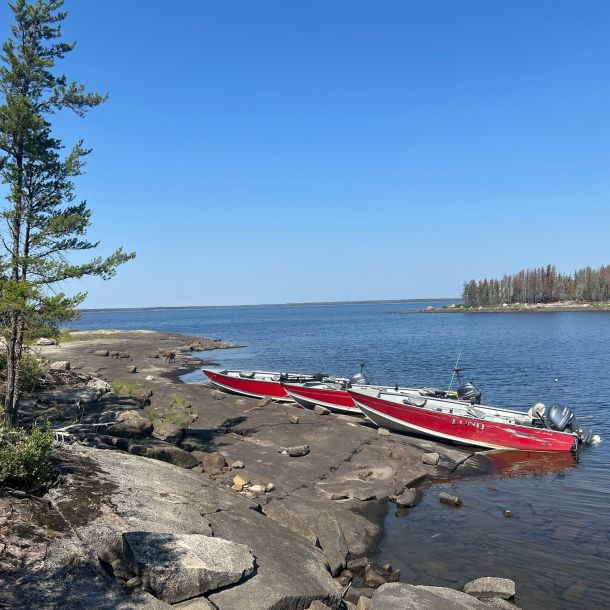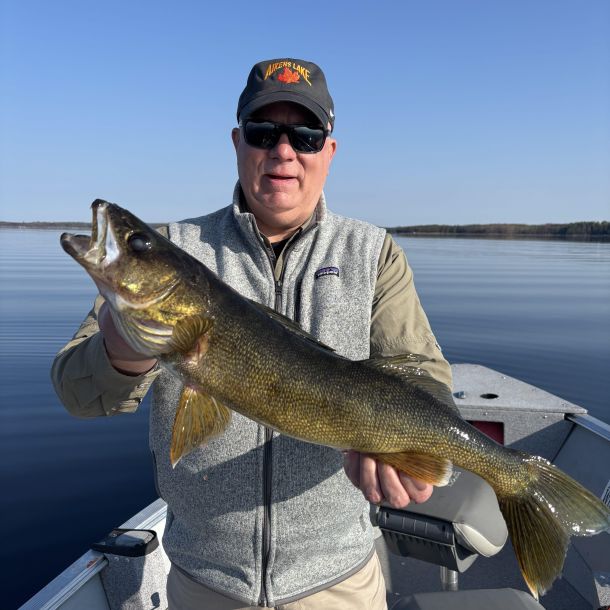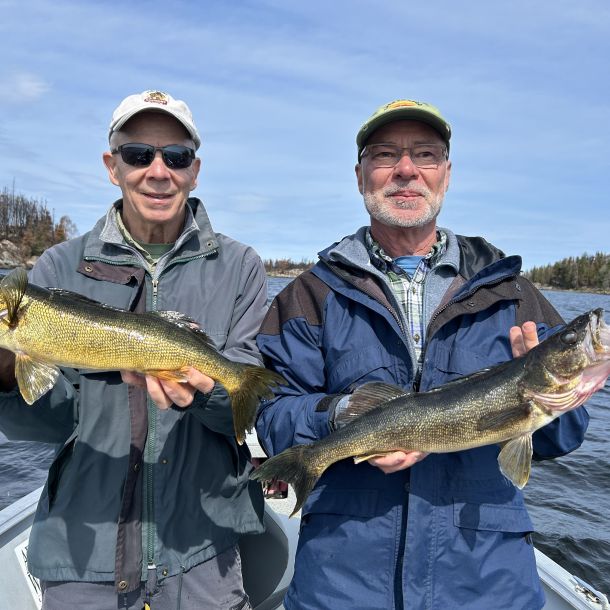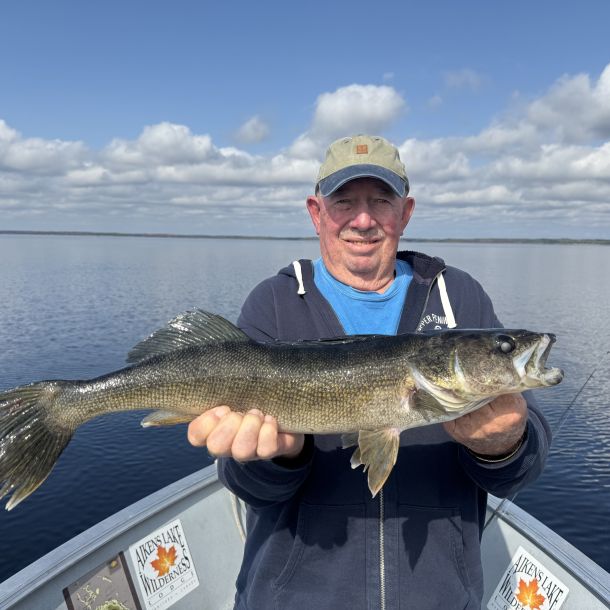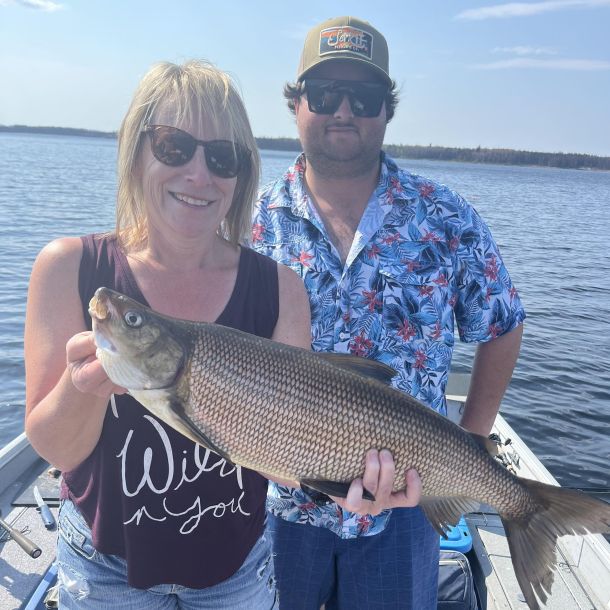The forest around Aikens Lake is already regenerating
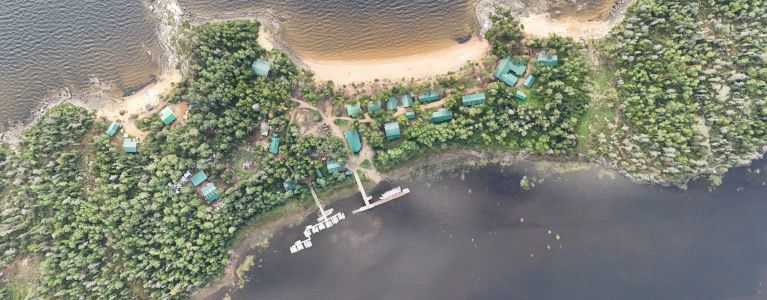
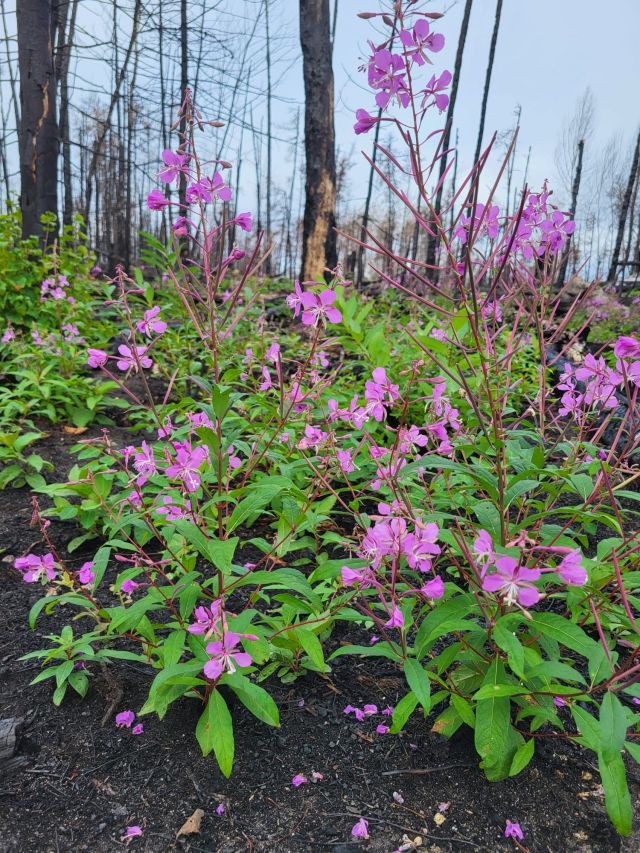
Boreal forest regeneration in Manitoba after a wildfire involves natural processes like the release of seeds from fire-adapted trees.
- Wildfires are a natural part of the boreal ecosystem and can lead to regeneration by opening the canopy for new sunlight and releasing nutrients into the soil.
- Fire-adapted species, such as the jack pine, release their seeds when exposed to high temperatures, allowing new trees to grow.
- "Legacy trees" that survive the fire serve as a seed source for the new forest.
After a wildfire, the Manitoba boreal forest begins to recover almost immediately, with signs of renewal appearing quickly in the form of new plant growth like grasses and poplar saplings, followed by coniferous trees the next spring. This renewal is a natural part of the forest's cycle, as fire can clear out older growth and create conditions for new life to emerge.
As promised, we wanted to follow up our past newsletter with a bit more information to help paint a better picture of Aikens and the wildfire we went through this summer. The 2025 wildfire season was the worst in three decades, impacting almost every tourism operator in the province. An evacuation order was issued at 5:00 PM on July 9th for Aikens Lake and lasted until 7:00 AM on Monday, August 11th.
July 9th was very hot (temps in the 32-35°C range), relative humidity was very low, there were heavy South winds (30 gusting to 70), and the forest was tinder dry. All those conditions contributed to a Level 6 fire (the worst classification, as it denotes a canopy fire). It travelled more than 25km in a single day from a few km south of Aikens to far North of us.
It first hit the shoreline on the South side of Aikens (just east of GGO) in early afternoon, and travelled up the Southern shoreline as well as the Western shoreline. It went through the Gammon River as it exits Aikens and flows NW towards the Bloodvein River.
The hard work of the Aikens team in the days leading up to the fires played a big part in saving both GGO and Lost Lake. Kudos to some very amazing people! For days they were clear-cutting 50 feet around all structures, hauling brush and logs away, and getting the sprinklers dialed in. Those elements were all instrumental in the success. It is evident looking at these pictures just how well the system worked. Here are some before and after from the outpost camps.
Unfortunately, we lost a few things such as a shed, the GGO shorelunch structure, a 30-foot section of the dock was burned but the work the crew put in to prepare the area worked to prevent further loss.
The hotspots that remained were mainly Level 1 and 2 fires, meaning that they don't move fast, and they are on the ground only. With the help and expertise of Crew 32 from the Manitoba Wildfire Services on July 10th, we started the big task of prepping the main camp for the eventuality of the fire. A big thank you goes out to MWS for their knowledge, expertise, help, and support.
A huge shout-out to Pat and Jus, who spent countless hours replacing and fixing pumps, and making sure our water defenses stayed strong (and Mars for jumping in to help!). To Kurt, Josh, Kieran, Aiden, Tyson, Boots, Marty, and Joel — for fueling pumps daily, helping with equipment, and jumping in wherever needed. To Pit and Julie — for staying in constant contact with Wildfire and guests, coordinating evacuation and safety plans, cutting trees to protect cabins (Pit), and keeping everyone well-fed and energized (Julie).
We know that many of you were following the NASA FIRMS fire map and saw those red spots growing daily. The fire got very close. It wrapped around the entire lake and made it to the Back Bay, just across from our dock. It was a tense few weeks, with our crew working tirelessly to keep pumps running, while of course keeping at a safe distance.
Emergency preparedness
Having learned from past experiences what an effective water suppression system requires, we’re proud to say that Aikens was well-equipped and ready when the wildfire threat arose. Years ago, we made the decision to invest in our own system so that we wouldn’t have to rely on outside resources to protect our beautiful lodge.
Our setup included multiple high-capacity water pumps, 80 sprinklers, and more than 2 kilometres of layflat hoses — all well stored and ready to be installed. This proactive approach gave us confidence that we could respond quickly and effectively to safeguard both our guests and the property we care so deeply about.
Beyond fire suppression, we also recognize the unique challenges of operating in a remote lodge setting. We place great importance on having an evacuation plan, maintaining radio communication with our guide boats on the lake, and keeping robust first aid “go bags” ready at all times. These measures ensure that, no matter the situation, our team is prepared to act swiftly and safely.
Our staff were ready and on hand to put the plan into action, and we were proud to see how smoothly everything went. The safety of our guests and team is always our top priority, and it was rewarding to see that our preparation and training truly made a difference.
With the heroic actions and expertise from the Manitoba Fire crews, they were able to cut the fire off before it reached the peninsula.
The Days that Followed
On Thursday, Aug 7th, rain started coming down in buckets (28mm total). On Friday afternoon, a decision was made by MWS that the lodge could reopen to guests starting on Monday, August 11th. On Saturday morning, with less than 24 hours' notice, two planes carrying 16 beaming staff and 2 happy lodge dogs landed at Aikens to start turning what was a fire zone into a tourist camp once again.
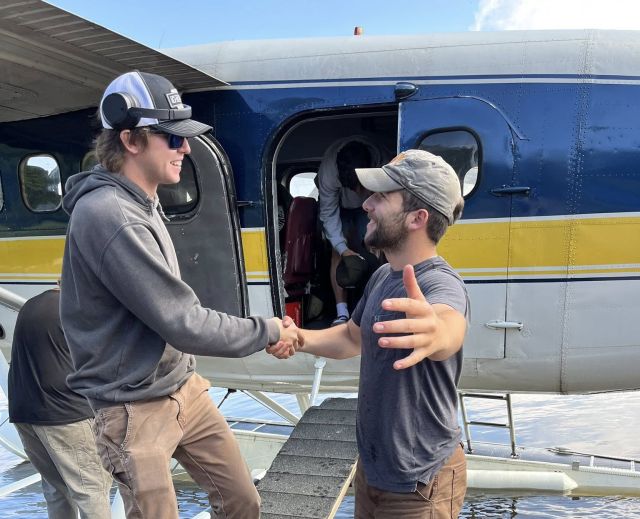
Our research shows that even in the immediate aftermath of a wildfire, there are early and encouraging signs of recovery. Within weeks, grasses and fast-growing species like young poplar saplings begin to emerge from the burned soil. Animals start to return to their territories, foraging on the new growth. Fire-resistant plants such as fireweed quickly reappear, and the presence of fresh vegetation shows that the soil and root systems remain healthy and viable.
It was truly heartening to see how quickly this recovery began at Aikens. Within just a couple of weeks after the fire, bright fireweed and young saplings were already pushing through the soil. And with that new growth came the return of wildlife — bears, moose, and countless birds filling the forest again with movement and sound.
The hardest-hit area was along the river, up to the fast waters. That section saw the greatest number of burned trees, as did some areas near the outposts. However, the fire moved in a patchy pattern around the lake, burning with varying intensity. As a result, many green trees remain standing, creating a landscape where renewal and resilience are visible side by side.
We were incredibly grateful to be able to reopen and finish our season at Aikens. Thanks to the dedication of our team and the support of our guests, we were able to return to doing what we love — sharing the beauty and serenity of this special place.
Although the wildfire brought challenges, it also reminded us of the strength of our community and the importance of preparation, teamwork, and care for the land. Seeing guests return, boats back on the lake, the lodge filled with laughter and stories once again was a powerful reminder of why we do what we do.
It felt great to get things rolling again and return to a sense of normalcy at Aikens. The fish were hungry, the lines were tight, and we were so happy to once again be surrounded by our friends and valued guests. It was especially rewarding to see the lodge full of energy and laughter.
We’re already looking forward to what’s shaping up to be a very busy year ahead. The 2026 calendar is filling up quickly, and Pit and Pat will be reaching out soon to help plan your 2026 Aikens Experience. We can’t wait to welcome everyone back and share another unforgettable season together.

